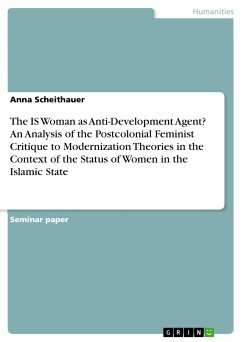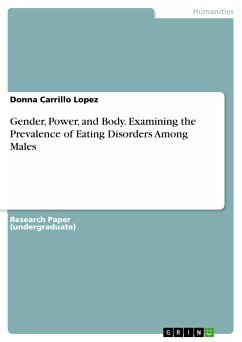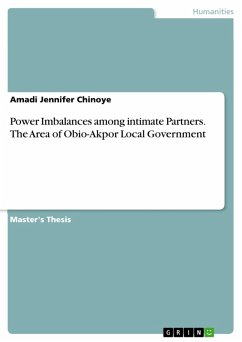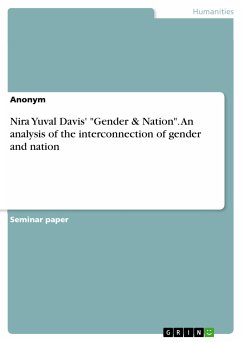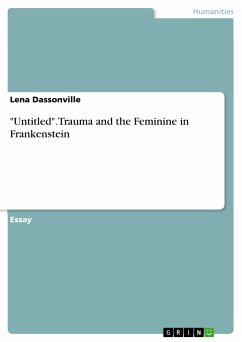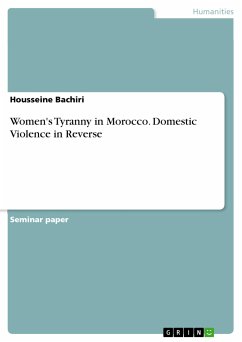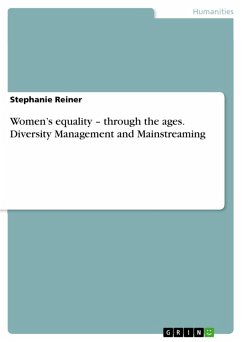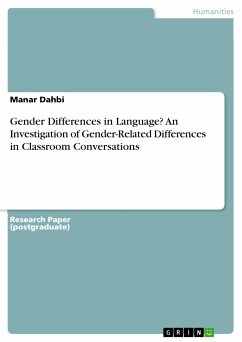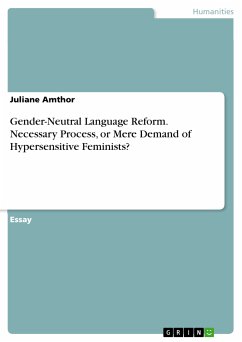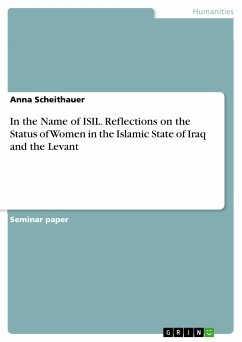
In the Name of ISIL. Reflections on the Status of Women in the Islamic State of Iraq and the Levant (eBook, PDF)
Sofort per Download lieferbar
Statt: 17,95 €**
15,99 €
inkl. MwSt. und vom Verlag festgesetzt.
**Preis der gedruckten Ausgabe (Broschiertes Buch)
Alle Infos zum eBook verschenkenWeitere Ausgaben:

PAYBACK Punkte
0 °P sammeln!
Seminar paper from the year 2019 in the subject Gender Studies, grade: A, University of Vienna (Development Studies), course: Gender Module, language: English, abstract: This paper sets out to provide a nuanced perspective on ISIL women (women in the Islamic State of Iraq and the Levant) by analyzing their prescribed roles and positions in the Islamic State in light of particular norms that many feminists adhere to in order to transcend the debate between global and Islamic feminism. The author lays a particular focus on the political dimension that is interwoven with the role of ISIL women in...
Seminar paper from the year 2019 in the subject Gender Studies, grade: A, University of Vienna (Development Studies), course: Gender Module, language: English, abstract: This paper sets out to provide a nuanced perspective on ISIL women (women in the Islamic State of Iraq and the Levant) by analyzing their prescribed roles and positions in the Islamic State in light of particular norms that many feminists adhere to in order to transcend the debate between global and Islamic feminism. The author lays a particular focus on the political dimension that is interwoven with the role of ISIL women in the establishment of a global caliphate and identifies some of the intricacies thereof. More specifically, the construction of differences between women and men as well as among different types of women served as a main instrument for ISIL's gender ideology in this larger state-building project. The author, thus, aims to address and answer the following question in this paper: How did the construction of differences inherent to ISIL's gender ideology shape the discursive construction of the role and position of women in the Islamic State and the Levante? Women joining and serving terrorist groups is not a new phenomenon. However, the large number of female recruits also from Western parts of the world together with ISIL's gender-targeted propaganda strategy, its specific policy on women and its strict gender apparatus made it rather unique. The global dimension with women having joined from all over the world to support the establishment of a global caliphate adds yet another level to the complexities and historical relevance of this phenomenon. A lot has been written about ISIL's gender-specific recruitment practices, the motivations of women to join ISIL as well as the particular functions of and conditions for women from a security perspective, particularly with view to counter-terrorism aspirations and the broader "Women, Peace and Security" (WPS) agenda addressing also women's right's concerns including Sexual and Gender-Based Violence (SGBV). ISIL women are thus mostly portrayed as either committed jihadists or victims of a brutal regime. Less has been written though on ISIL's gender ideology from a feminist perspective, although various sources list "liberation from the West" as one of the main motivators for women to join ISIL. The literature also neglects somewhat the political dimension of ISIL's gender apparatus. Considering women's contributions to a larger state-building project it is rather surprising that the literature has not taken these perspectives up in depth.
Dieser Download kann aus rechtlichen Gründen nur mit Rechnungsadresse in A, B, BG, CY, CZ, D, DK, EW, E, FIN, F, GR, HR, H, IRL, I, LT, L, LR, M, NL, PL, P, R, S, SLO, SK ausgeliefert werden.




